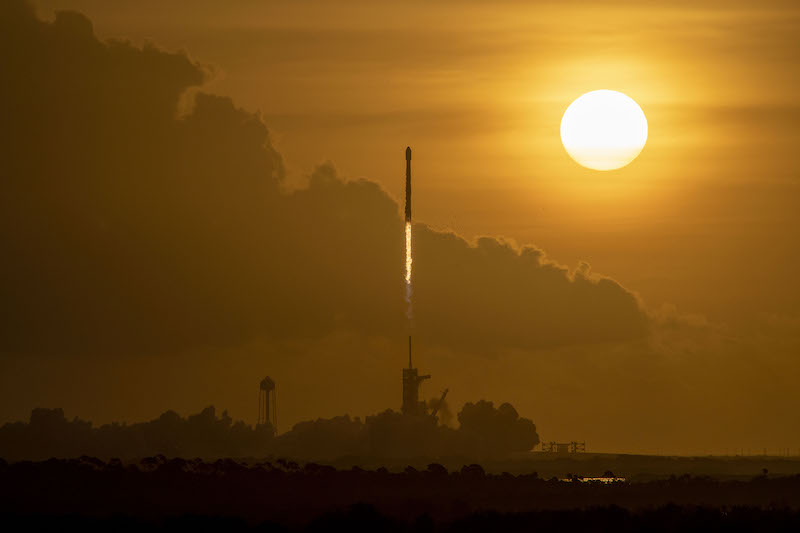SpaceX Starlink launches in January 2023
Starlink Group 2-6: January 31, 2023, 16:15 UTC (11:15 a.m. EST)
Falcon 9 Block 5 | Vandenberg SFB, California | SUCCESS
Liftoff! pic.twitter.com/tXFGd8yOgS
— SpaceX (@SpaceX) January 31, 2023
Deployment of 49 Starlink satellites confirmed
— SpaceX (@SpaceX) January 31, 2023
You can watch a livestream of the launch at SpaceX’s YouTube channel using the link at the top of this page. Livestreams typically begin about five minutes before liftoff.
After launch, look for a train of lights
Following every Starlink launch, the internet buzzes with people asking:
What’s that long line of lights in the sky that looks like a train?
What you’re seeing is the Starlink satellites moving into a higher orbit. You can check to see if they will pass over your area using the Find Starlink website.
If you live near the launch sites on the East or West Coast of the United States, you may also see the rocket ascending into the sky, leaving behind a billowing glow. This sight also causes people to clamor with questions. In the photo below, you can see what a SpaceX Falcon 9 rocket launch looks like.

Growing numbers amid controversy
According to Wikipedia, as of December 2022, Starlink consists of over 3,300 mass-produced small satellites in low Earth orbit that communicate with designated ground transceivers. They provide internet access to over 1,000,000 subscribers as of December 2022.
Love ’em or hate ’em, these Starlink satellites are part of SpaceX’s vision for a global internet communication satellite constellation. They deliver high-speed internet service worldwide, mainly to locations where ground-based internet is unreliable, unavailable, or expensive. The private company is well-known for launching batches back-to-back, several times a month, regularly lofting 60 satellites at a time. And SpaceX plans to build up to perhaps as many as 30,000 eventually.
Most thought it was exciting to see the first few Starlink satellites traveling together in the night sky. But then more were launched, and then more. And astronomers began to worry.
Because Starlinks are bright, astronomers say they’re photobombing astronomical images. Therefore, they have the potential to interfere with the professional astronomical observations that have brought us our modern-day view of the cosmos. And although SpaceX has tried to address the issue, they remain far from what astronomers say is acceptable. Read more about how satellites harm astronomy and what’s being done.

Bottom line: SpaceX’s next Starlink launch for the month is currently scheduled from California at 16:15 UTC on January 31, 2023. Watch the livestream here.
Read more: Starlink satellites can look like a plume or train of light











